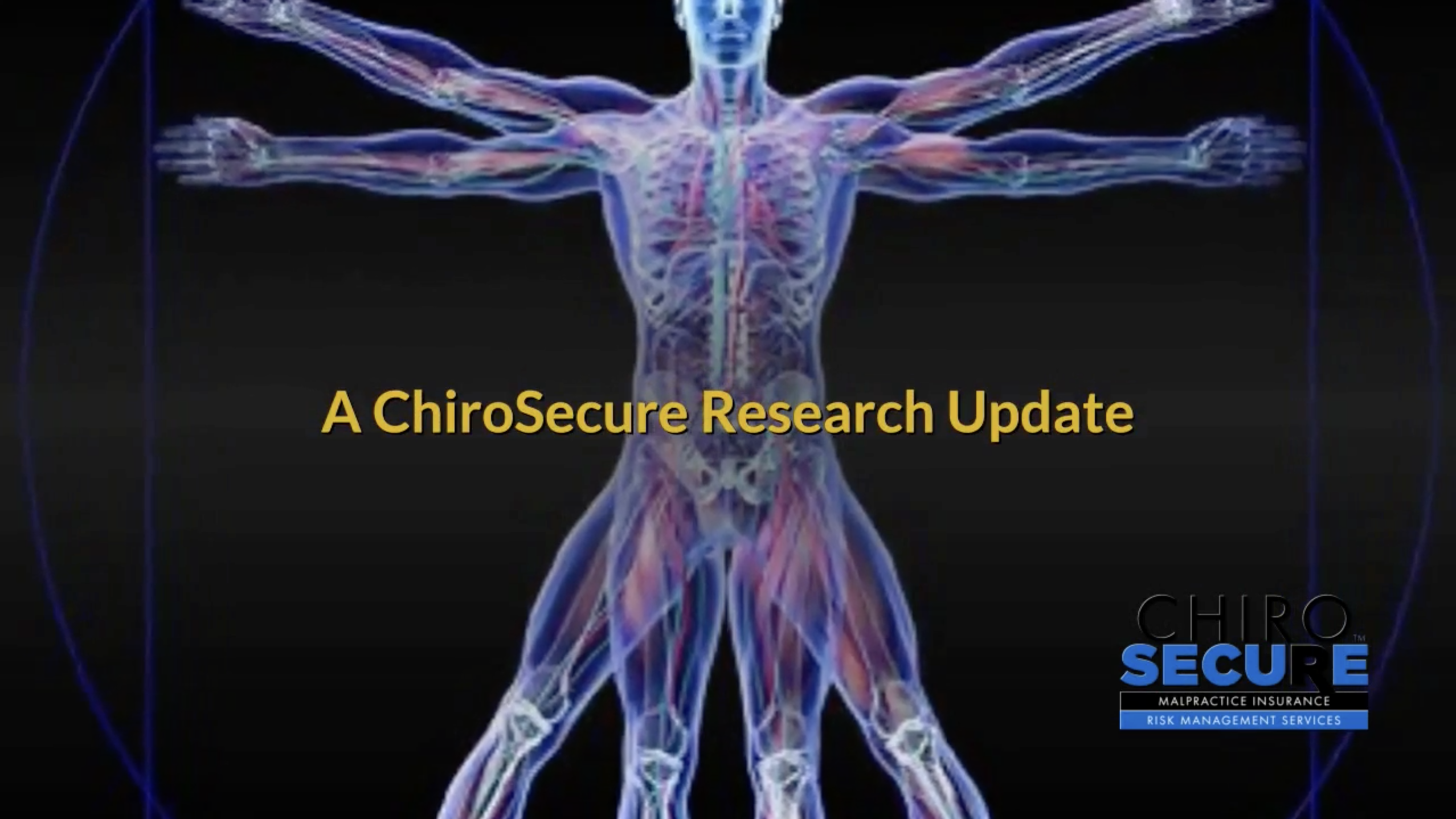Title
Symptomatic, Magnetic Resonance Imaging-Confirmed Cervical Disk Herniation Patients: A Comparative-Effectiveness Prospective Observational Study of 2 Age- and Sex-Matched Cohorts Treated With Either Imaging-Guided Indirect Cervical Nerve Root Injections or Spinal Manipulative Therapy
Content: A ChiroSecure Research Update
Abstract
The purpose of this study was to compare the outcomes of overall improvement, pain reduction, and treatment costs in matched patients with symptomatic, magnetic resonance imaging-confirmed cervical disk herniations treated with either spinal manipulative therapy (SMT) or imaging-guided cervical nerve root injection blocks (CNRI).
Discussion
This prospective cohort comparative-effectiveness study included 104 patients with magnetic resonance imaging-confirmed symptomatic cervical disk herniation. 52 patients treated with CNRI were age and sex matched with 52 patients treated with SMT. Baseline numerical rating scale (NRS) pain data were collected. Three months after treatment, NRS pain levels were recorded and overall “improvement” was assessed using the Patient Global Impression of Change scale. Only responses “much better” or “better” were considered “improved.” The proportion of patients “improved” was calculated for each treatment method and compared using the χ2 test. The NRS and NRS change scores for the 2 groups were compared at baseline and 3 months using the unpaired t test. Acute and subacute/chronic patients in the 2 groups were compared for “improvement” using the χ2 test.
“Improvement” was reported in 86.5% of SMT patients and 49.0% of CNRI patients (P = .0001). Significantly more CNRI patients were in the subacute/chronic category (77%) compared with SMT patients (46%). A significant difference between the proportion of subacute/chronic CNRI patients (37.5%) and SMT patients (78.3%) reporting “improvement” was noted (P = .002).
Subacute/chronic patients treated with SMT were significantly more likely to report relevant “improvement” compared with CNRI patients. There was no difference in outcomes when comparing acute patients only.
Reference
Cynthia K. Peterson, RN, DC, MMedEd, Christian W.A. Pfirrmann, MD, MBA, Jürg Hodler, MD, MBA, Serafin Leemann, DC, Christof Schmid, DC, Bernard Anklin, DC, B. Kim Humphreys, DC, PhD.J Manipulative Physiol Ther. 2016 (Mar); 39 (3): 210-217. https://www.jmptonline.org/article/S0161-4754(16)00051-8/fulltext.






